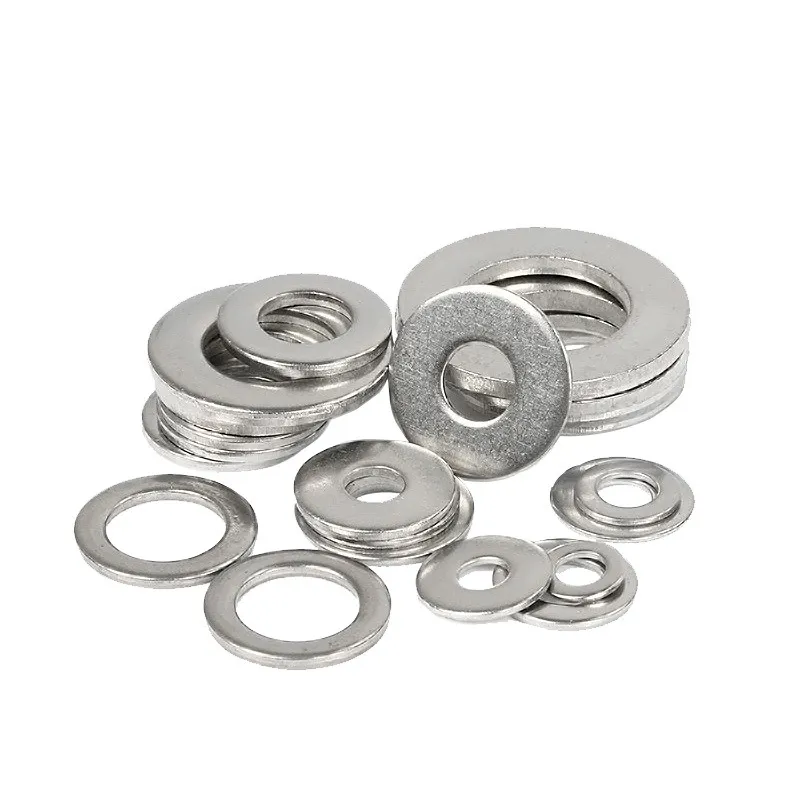

Understanding Imperial Spring Washers and Their Applications in Mechanical Engineering
Nov . 17, 2024 15:51 Back to list
Understanding Imperial Spring Washers and Their Applications in Mechanical Engineering
Understanding Imperial Spring Washers An Essential Component in Mechanical Engineering
In the realm of mechanical engineering and manufacturing, minor components often play pivotal roles in the performance, durability, and safety of machines and structures. One such integral component is the imperial spring washer, a device designed to provide a consistent and reliable means of preventing loosening in bolted connections. This article delves into the significance, types, and applications of imperial spring washers, underscoring their importance in various engineering contexts.
What are Imperial Spring Washers?
Imperial spring washers, also referred to as light-duty or Belleville washers, are specialized circular devices made from materials like steel, stainless steel, or other alloys. These washers are engineered to fit onto bolts or screws in imperial measurement standards, which are primarily used in the United States and a few other countries. Their design features a slightly convex shape that allows them to exert force when compressed, making them ideal for applications requiring tension and flexibility.
Functionality and Benefits
The primary purpose of an imperial spring washer is to provide a clamping force that prevents the fasteners from loosening over time, which can be caused by vibrations, thermal expansion, and contraction. By absorbing shock and maintaining tension at the joint, these washers help preserve the integrity of the assembly.
One of the key benefits of using spring washers is their ability to adjust to various positions within the fastening system. Unlike flat washers, which only distribute the load, spring washers can absorb some of the transitions in load due to their elasticity. This unique property can lead to enhanced joint stability, especially in high-vibration environments such as engines or heavy machinery.
Types of Imperial Spring Washers
There are several types of imperial spring washers, including
imperial spring washers

1. Belleville Washers Known for their significant load-bearing capacity, Belleville washers are conical-shaped and can stack to offer varied spring rates. 2. Wave Washers These are wavy in shape, allowing for a distributed load and can accommodate axial movements.
3. Split Lock Washers These have a split design that helps lock the joint in place, reducing the chances of loosening.
Choosing the right type of spring washer is crucial and often depends on factors like the specific application, load requirements, and environmental conditions.
Applications Across Industries
Imperial spring washers are extensively used in various industries, including automotive, aerospace, construction, and electronics. In automotive applications, they are commonly found in engine compartments and suspension systems, where vibration resistance is essential. In the aerospace sector, these washers are vital in securing components that undergo significant temperature variations, ensuring safety and reliability during flight.
In construction, imperial spring washers assist in anchoring equipment and securing structural elements, while in electronics, they play a vital role in maintaining connections in circuit boards and devices.
Conclusion
Understanding and utilizing imperial spring washers effectively can greatly enhance the performance and longevity of mechanical systems. Their ability to counteract loosening and absorb shocks is an invaluable asset across numerous applications. As industries continue to evolve and demands for reliability increase, the importance of these small yet mighty components will undoubtedly remain at the forefront of mechanical engineering design.
Latest news
-
Hot Dip Galvanized Bolts-About LongZe|High Strength, Corrosion Resistance
NewsJul.30,2025
-
High-Strength Hot Dip Galvanized Bolts - Hebei Longze | Corrosion Resistance, Customization
NewsJul.30,2025
-
Hot Dip Galvanized Bolts-Hebei Longze|Corrosion Resistance&High Strength
NewsJul.30,2025
-
High-Strength Hot-Dip Galvanized Bolts-Hebei Longze|Corrosion Resistance&High Strength
NewsJul.30,2025
-
Hot Dip Galvanized Bolts-Hebei Longze|Corrosion Resistance&High Strength
NewsJul.30,2025
-
Hot Dip Galvanized Bolts - Hebei Longze | Corrosion Resistance, High Strength
NewsJul.30,2025

